Key takeaways:
- Fundamental analysis involves digging deep into a cryptocurrency’s value, considering technology, team, and market demand beyond just price trends.
- Engaging in fundamental analysis helps investors make informed decisions, mitigating risks associated with market hype and fostering a long-term perspective.
- Key components of analysis include assessing technology, evaluating the project team, and understanding market dynamics, while community engagement and use cases are also critical.
- Utilizing tools like CoinMarketCap, sentiment analysis platforms, and blockchain explorers enhances the effectiveness of fundamental analysis, making data more accessible for informed investment decisions.
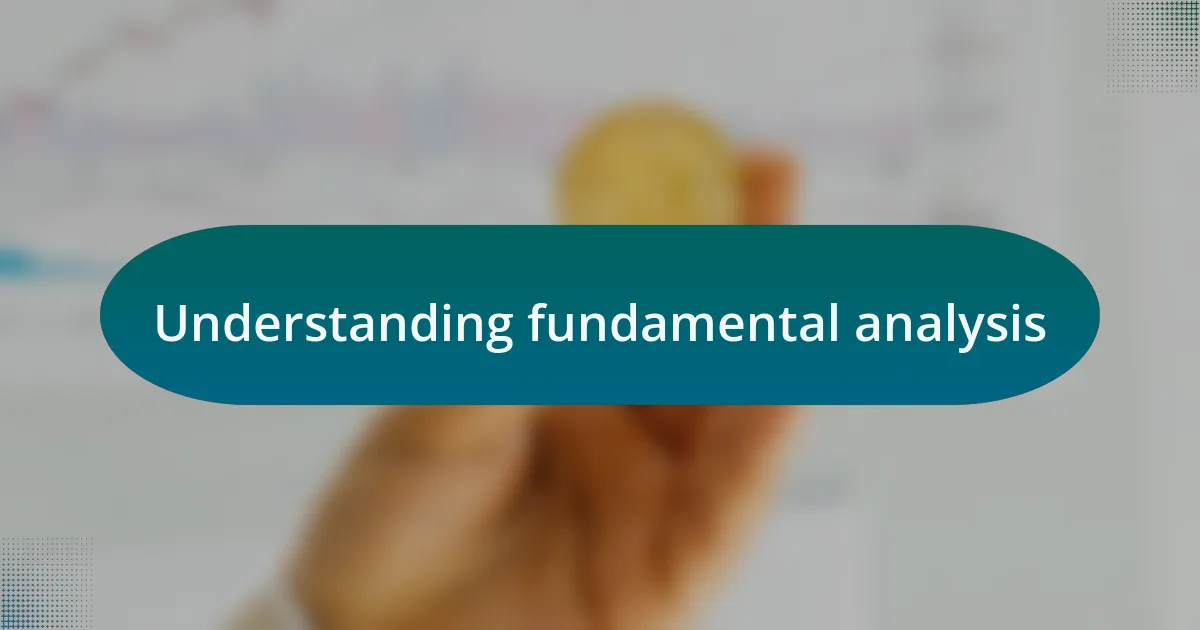
Understanding fundamental analysis
Fundamental analysis is like the detective work behind investing. It goes beyond price charts and market trends, diving into the heart of a cryptocurrency’s value. I remember my early days in crypto, analyzing whitepapers and assessing a project’s team; it was exhilarating to discover hidden gems that were undervalued.
When I think about fundamental analysis, I often ask myself, “What sets this cryptocurrency apart?” This line of thinking leads me to consider various factors such as use cases, technology, and market demand. For instance, evaluating how a blockchain platform addresses real-world problems can provide significant insight into its potential longevity and relevance.
Emotional aspects also play a pivotal role; after all, investing is as much about psychology as it is about numbers. I’ve often felt a rush of excitement uncovering a project that resonated with my values, balancing my enthusiasm with a logical assessment of its fundamentals. This blend of intuition and analysis makes fundamental analysis not just a tool, but also a journey of discovery in the crypto space.
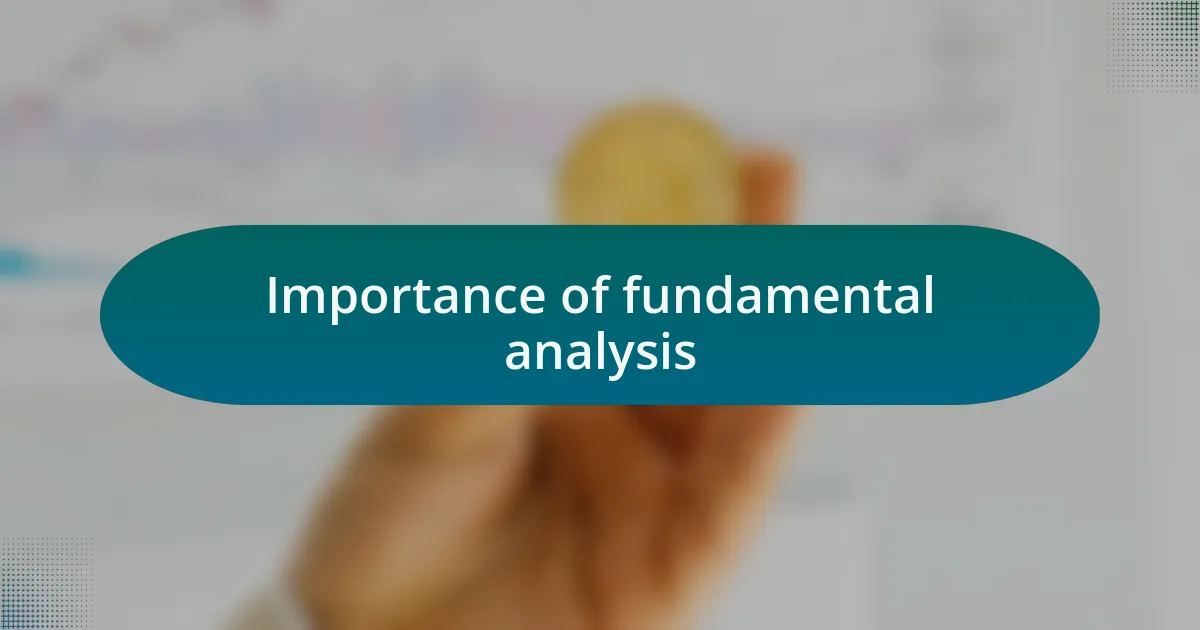
Importance of fundamental analysis
Engaging in fundamental analysis is crucial because it helps investors make informed decisions, rather than relying solely on market hype. I remember a time when I felt pressured to jump into a trending cryptocurrency, only to realize later that it lacked solid fundamentals. This experience taught me the value of looking deeper, confirming that understanding a project’s foundation is essential to mitigate risks.
Moreover, fundamental analysis sheds light on the broader market context and external factors influencing a cryptocurrency’s performance. For example, while researching a blockchain project, I stumbled upon regulatory developments that could significantly impact its viability. I often ask myself, “What external forces could affect this investment?” This question drives me to keep updated on news and trends that could reaffirm or challenge my initial analysis.
Ultimately, the significance of fundamental analysis lies in its ability to foster a long-term perspective. I’ve observed that those who focus solely on short-term gains often miss out on the true potential of promising projects. By discerning the underlying value and future prospects, I’ve been able to hold on to investments that flourished over time, proving that patience combined with solid analysis pays off.
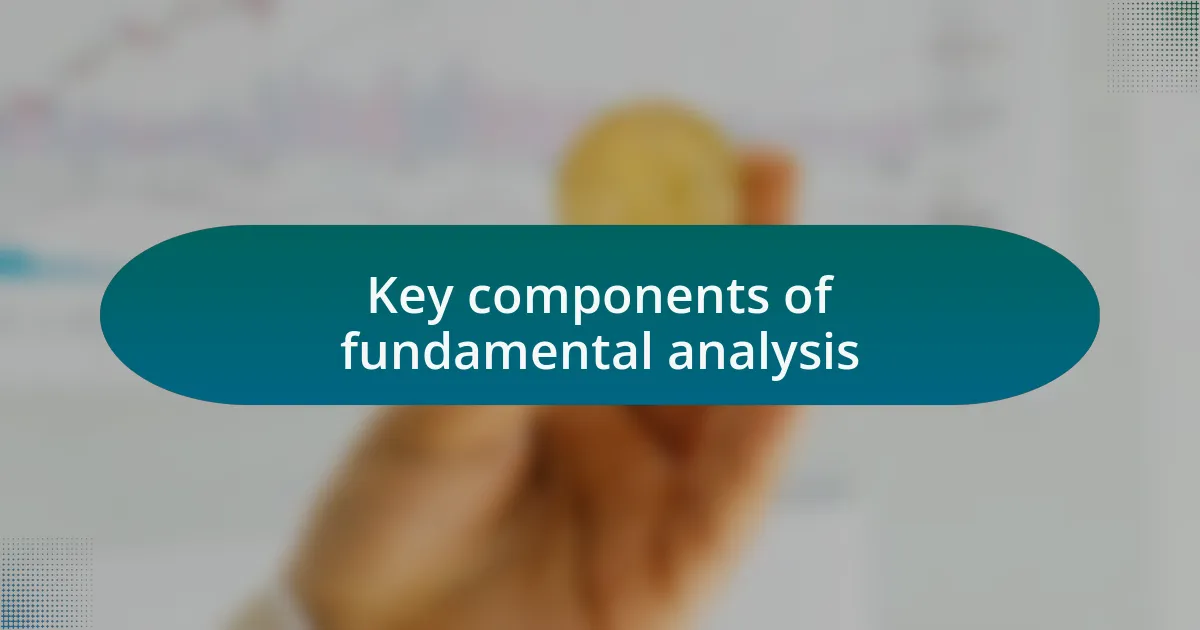
Key components of fundamental analysis
Understanding the key components of fundamental analysis is essential for making astute investment choices. One of the cornerstones is assessing the technology behind a cryptocurrency. I recall diving into a project that promised revolutionary speeds and scalability. After dissecting the whitepaper and comparing the tech against competitors, I felt a real rush. The technological foundation can either elevate a project or expose it to risk; it’s crucial to dig deeper than just the surface claims.
Another vital aspect is evaluating the team behind a cryptocurrency. I’ve learned from experience that a talented and transparent team can make all the difference. I remember investing in a project led by an industry veteran who had a track record of successful launches. This personal connection to the team gives me confidence, but I often wonder: how well do I know the individuals steering this ship? Understanding who is involved can provide insights into the project’s potential for success or failure.
Lastly, market dynamics play a significant role in fundamental analysis. I often analyze supply and demand trends, as they can drastically shift a cryptocurrency’s value. My initial reluctance to enter a particular coin stemmed from noticing an oversupply that could press prices down. Engaging deeply with these factors allows me to navigate the often tumultuous crypto waters, ensuring I’m making educated rather than impulsive decisions.

How to analyze crypto assets
When it comes to analyzing crypto assets, one of the first steps I recommend is assessing the community around a cryptocurrency. I’ve personally experienced the power of a vibrant community; during my early days in trading, I joined forums buzzing with discussions about a coin’s future, and I could feel the energy and enthusiasm. So, I often ask myself: how engaged is the community, and what are they saying? A supportive and active user base can not only drive project growth but also reveal valuable insights into the project’s longevity.
Another critical area to consider is the use case of the cryptocurrency. I recall a time when I invested in a coin that seemed to be everywhere but lacked a clear utility. As the months passed, it became evident that without a solid real-world application, the hype waned, and so did the price. Evaluating whether a crypto asset addresses a genuine problem or need is essential; it helps me avoid projects that are all talk and no action.
Lastly, I cannot stress enough the importance of regulatory scrutiny in the crypto space. I still remember a project I was excited about that suddenly found itself in hot water due to regulatory uncertainty. As I navigated through that panic, it struck me how crucial it is to stay updated on regulations affecting the crypto landscape. Monitoring legal developments isn’t just prudent; it’s a necessary part of safeguarding my investments and ensuring they align with future trends.
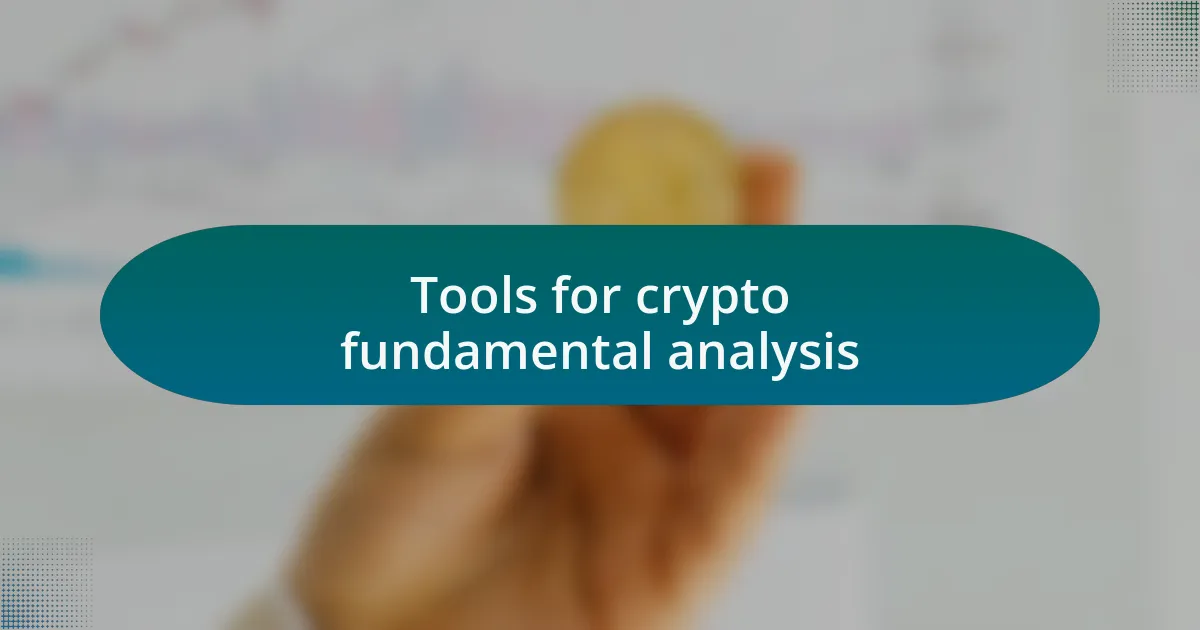
Tools for crypto fundamental analysis
When diving into fundamental analysis for crypto, I rely heavily on several online platforms and tools. Websites like CoinMarketCap and CoinGecko provide a wealth of data, including market cap, trading volumes, and historical price charts. I remember the first time I navigated these tools; it was like gaining access to a treasure trove of information that drastically improved my trading strategies.
Another invaluable resource is social media sentiment analysis tools, such as LunarCrush. They track social media engagement and provide insights into community sentiment. I can’t tell you how many times I’ve adjusted my strategy based on changes in sentiment. When I see a spike in positive discussions around a coin I own, it gives me a sense of validation and often prompts me to dive deeper.
Lastly, blockchain explorers like Etherscan have become my go-to for on-chain analysis. They allow me to track transactions, verify smart contracts, and understand the tokenomics of specific projects. Reflecting on my trading journey, I recall how Etherscan helped me identify a project with unusually high wallet activity, sparking my interest and ultimately leading to a successful investment. It’s tools like these that transform the often complex world of crypto into something more manageable and actionable.
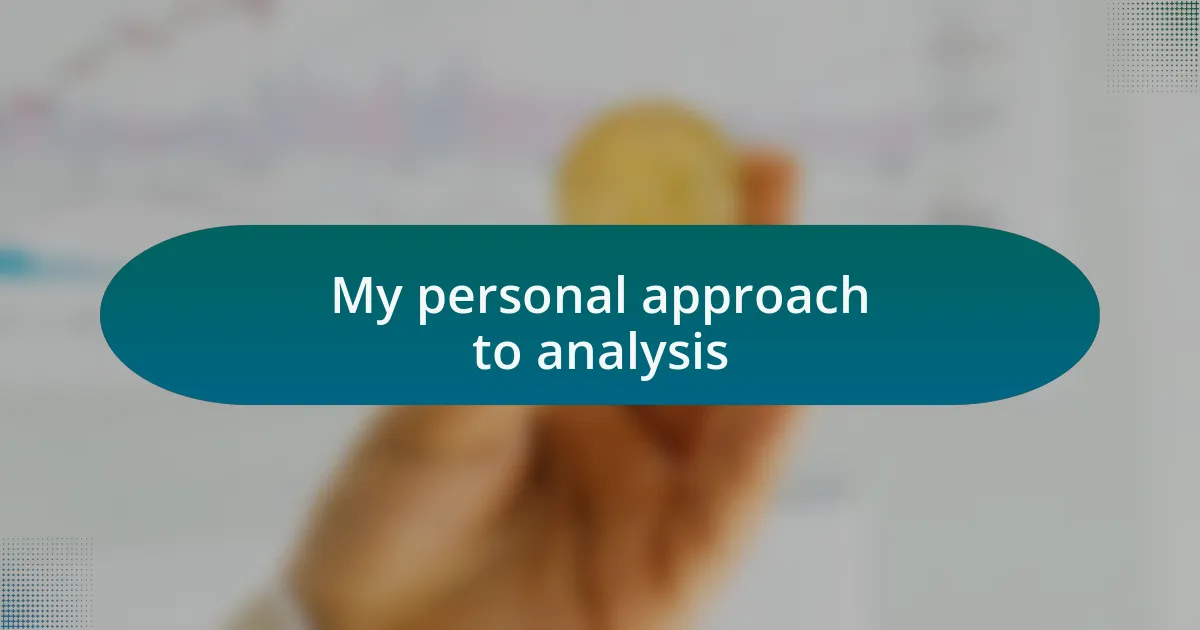
My personal approach to analysis
When I approach fundamental analysis, I like to combine both qualitative and quantitative data. It’s about more than just numbers; I often find myself exploring the stories behind the coins. For instance, I once invested in a project because I resonated with its mission—a community-driven initiative aimed at transparency in finance. That connection not only motivated my investment but also kept me engaged in tracking its progress.
To deepen my understanding, I often watch interviews and discussions featuring the development teams. I remember one time, a founder’s passion and clarity during a live stream really struck a chord with me. It reinforced my belief in the project and sparked a renewed sense of purpose in my investment strategy. Does anyone else feel that emotional connection can lead to better decision-making? In my experience, it often does.
Another key aspect of my analysis involves staying updated with regulatory news and market trends. I used to overlook these factors; however, I’ve learned the hard way how they can sway a project’s success. After a misleading announcement about regulations once derailed one of my investments, I realized that an informed trader is a successful trader. It’s remarkable how these insights can prevent costly mistakes in an ever-evolving market.